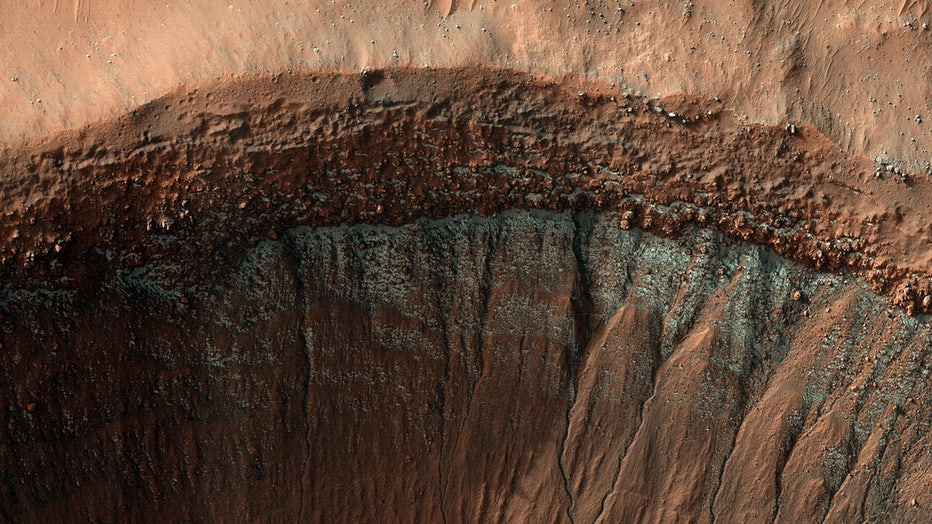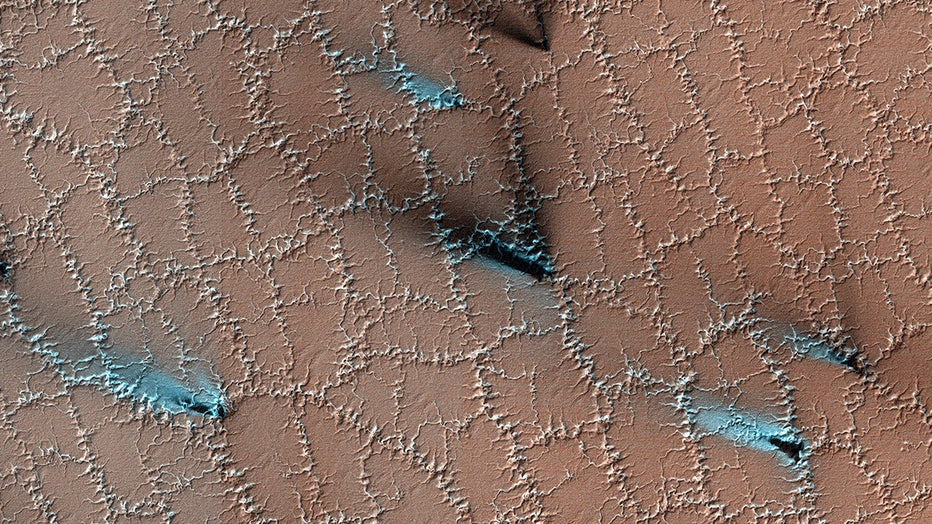Beautiful images captured of Mars’ frost-covered surface
NASA captured stunning images of Mars’ winter wonderland.
During the colder season, Mars’ landscape is completely transformed into quite literally an otherworldly and iridescent winter scene.
The red planet can reach sub-zero temperatures during the colder months and especially at the poles where it gets as low as minus 190 degrees Fahrenheit (minus 123 degrees Celsius), NASA said.
Despite the frigid temperatures, the wintry surface offers stunning views.
The camera aboard NASA’s Mars Reconnaissance Orbiter captured beautiful images of frost-covered sand dunes just after the winter solstice.

The Orbiter also captured frost-draped craters and frozen soil forming polygon patterns on Mars’ surface.
The frost appeared iridescent in the light and gave off a blue/teal hue.

Mars has 2 types of snow
Mars has two types of snow, according to NASA.
Unlike Earth’s snow which consists of mainly water and ice, Mars has two: water ice and carbon dioxide, or dry ice.
Since the air on Mars is thin and it’s so cold, the snow consisting of water and ice turns into gas before it can get to the planet’s surface, NASA said.
The dry-ice snow, however, does reach the ground.
“Enough falls that you could snowshoe across it,” said Sylvain Piqueux, a Mars scientist at NASA’s Jet Propulsion Laboratory in Southern California whose research includes a variety of winter phenomena. “If you were looking for skiing, though, you’d have to go into a crater or cliffside, where snow could build up on a sloped surface.”
Mars has cubic snowflakes
On Earth, snowflakes tend to form in a hexagonal shape. This happens because of how our water molecules bond when they freeze, NASA explained.
On Mars, however, since its atmosphere consists of mostly carbon dioxide, the molecules bond in forms of four.
“Because carbon dioxide ice has a symmetry of four, we know dry-ice snowflakes would be cube-shaped,” Piqueux said. “Thanks to the Mars Climate Sounder, we can tell these snowflakes would be smaller than the width of a human hair.”
Mars Reconnaissance Orbiter
Launched in 2005, the Mars Reconnaissance Orbiter’s mission is to advance our understanding of Mars through detailed observations of its surface.
The Orbiter is carrying one of the most powerful cameras ever sent on a mission to another planet, according to NASA.
This story was reported from Los Angeles.
Dallas Press News – Latest News:
Dallas Local News || Fort Worth Local News | Texas State News || Crime and Safety News || National news || Business News || Health News
texasstandard.news contributed to this report.










